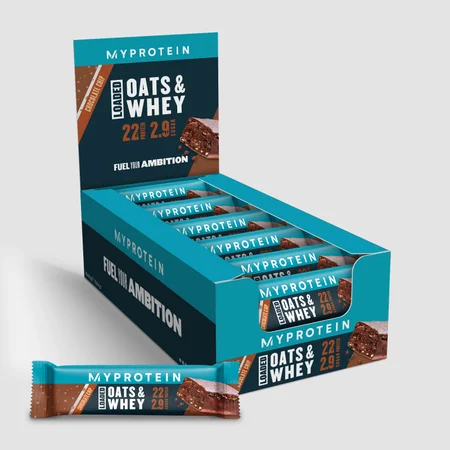What Is A Tempo Run? | Your Guide To Lactate Threshold Training

Frankly, long-distance running takes time (by nature) and equally to improve your game. While you probably can't go from zero to Usain Bolt overnight, you can include more lactate threshold training into your workouts for better endurance and a tougher mindset – in a quicker time than it'll take you to run a marathon.
Whether you're an athlete looking to gain an advantage over your competition, or you're just looking for fresh ways to push yourself, tempo runs could just be the routine to take your training up a notch.

What is a Tempo Run?
Tempo running means training smarter for long distance running. For anyone slogging it out without a plan, day in day out, desperately hoping to see results, a tempo run can give your running structure – while training your body and mind to cope better on each and every run.
There are two types of tempo runs, each focusing on training (and improving) a different threshold. They are:
- Aerobic threshold
Lactate threshold (also known as the anaerobic threshold)
First of all, here's the difference between aerobic and lactate thresholds...
Aerobic Threshold
During aerobic training, a person is exercising using their main energy system – which works using oxygen, generating energy to keep the body moving.
The aerobic threshold is defined as a point at which exercise raises blood lactate (lactic acid) above resting levels – in linear increments to exercise intensity or duration. This is generally a steady-state effort where you don't feel maxed out.
If you're not sure what lactic acid is, perhaps you'll know it as the burning sensation you get in your limbs when you’ve been training harder and longer than you’re used to.
The benefits of a higher aerobic threshold means that you can run for longer before relying on anaerobic metabolism, which is much more quickly used up and therefore bad news when you still have kilometres to go.
For most runners, the aerobic zone doesn’t begin until your heart is beating at around 120 bpm. If you're not a marathon runner but like to indulge in long runs to burn fat, sustaining a higher aerobic threshold means that you can burn more fat as fuel, as opposed to feeling that burn of lactic acid and coming to a grinding halt.
Lactate Threshold
When a person is exercising and they reach their lactate threshold (sometimes called the anaerobic threshold, although technically it's not quite the same), their body is accumulating lactic acid in the blood stream at a faster rate than it can be gotten rid of. This means they'll begin to feel maxed out, their short-term energy stores will be rapidly depleted and exercise will come to a halt. With a quick rest, they'll be ready to go again.
You'll hit your lactate threshold during an all-out sprint, which requires a lot of power in a short time period.
Improving this threshold has obvious advantages in the world of long distance running, such as it means you are able to run faster and further before your body becomes riddled with lactic acid.

Lactate Threshold Training Guide
You might have heard runners and lifters 'reaching for the burn', or in other words, training until they get that familiar burning sensation – which we now know is lactic acid. When you run further and faster, your body begins to rely on the anaerobic system and hits its lactate threshold, which is more difficult to maintain for a long period of time.
The good news is that you can train to increase your lactate threshold for better endurance, as well as a mindset that's able to cope with feeling the burn for longer. This is known as a tempo run.
So, How Can You Improve Your Threshold?
Runners who regularly train tend to be able to hold their lactate threshold for 20-40 minutes, depending on their pace.
Workouts that can increase your lactate threshold are run at either:
66-75% of VO2max (VO2max is the maximum amount of oxygen a person can utilise during intense exercise, usually measured in a lab) or; - 71-75% of maximum heart rate
For most, using their heart rate as a measure is the best way to improve their lactate threshold. This is where a heart rate monitor, and knowing your body’s capabilities before, during and near the end of a run is important.
You should build up your lactate threshold by working on longer endurance runs and less intense speeds. Here, we've outline a guide for two different types of tempo runs: 'interval training' and 'ladder training', depending on your preference:
Interval Training
- 1-3 mile warm up
- 2 x 3 miles at your long distance run pace (experienced runners work at your 10 mile race pace) with 3-5 minutes rest between each
- 1-2 mile cool down
Ladder Training
- 1-3 mile warm up
- 3 miles at your long distance run pace (experienced runners work at your 10 mile to your 1/2 marathon pace) with 2-5 minute rest
- 2 miles at your long distance run pace (experienced runners work at your 10 mile to your 1/2 marathon pace) with 2-5 minute rest
- 3 miles at your long distance (experienced runners work at your 10 mile to your 1/2 marathon pace) with 2-5 minute rest
- 1-2 mile cool down
It's important to have proper nutrition to improve your lactate threshold, as you'll need to ensure you can keep exercising without running out of glycogen stores.

Jack is a fitness and nutrition writer who specialises in weightlifting, boxing and MMA training.











